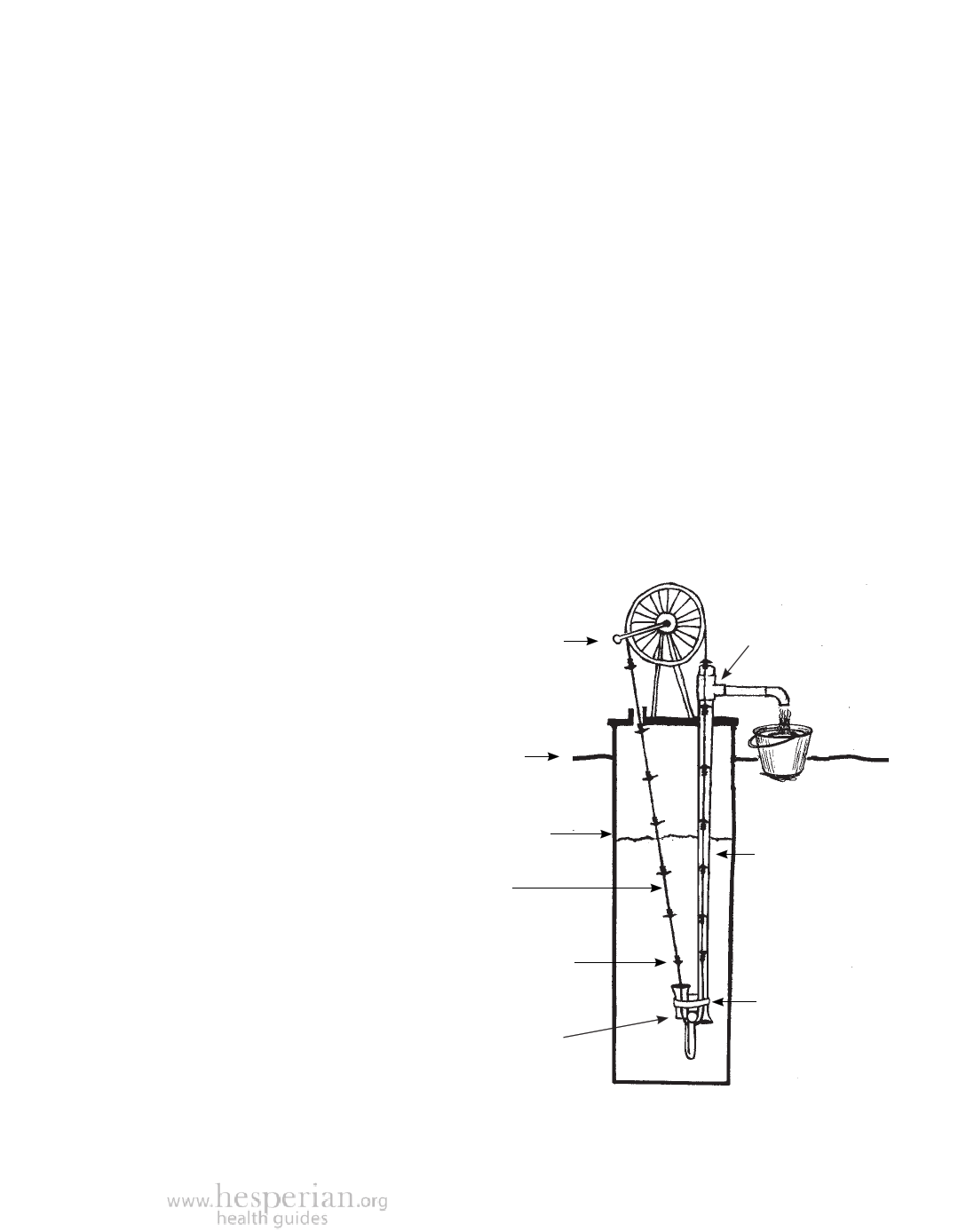
Protected Wells
83
Pumping water from wells
To move water up from a well, a pump is needed. Pumps use various kinds of
energy, including electricity, gas, solar energy, or human power. If a pump is
difficult to use or if it is often out of service, people will start to collect water
from unsafe sources.
How to choose a pump
All pumps have one thing in common: if they break, there is no water. For most
people, the best pump is one they can build, operate, and repair by themselves,
or that can be repaired by trusted local mechanics. Consider the following
when choosing a pump:
• Will it be usable by and meet the needs of both men and women?
Were women involved in selecting the community pump?
• What kind of energy source is available? If a pump uses costly fuel, or
electricity that is not available, it will not be useful.
• Is the pump easy to repair with available spare parts? Would it be better
to have a pump that breaks easily but is very easy to repair locally, or a
pump that will break after many years but cannot be easily repaired by
local people?
The rope pump: a low cost,
easy way to lift water
The rope pump is based
on an ancient design from
China. It is used to pump
water from wells up to 15 m
deep with little effort.
As a person turns the wheel,
water is lifted and pours out
of a spout at the top of the
well.
This pump costs little to
make and is easy to fix.
The rope is the part most
likely to break, but even
if it is fixed rather than
replaced, the pump still
works. People in many
countries have adapted rope
pumps to fit their needs and
the materials they have.
(See Resources.)
Bicycle wheel
or pulley
with handle
1½” or 4 cm
T- joint
Ground
level
Bucket
Water level
Rope
(left a little loose)
1½” or 4 cm
pipe
Rubber discs
sized to fit
tightly in pipe
1½” or 4 cm
pipe
Rubber
strap (holds
rope guide
together)
The rope pump is made from low cost, durable parts.
A Community Guide to Environmental Health 2012